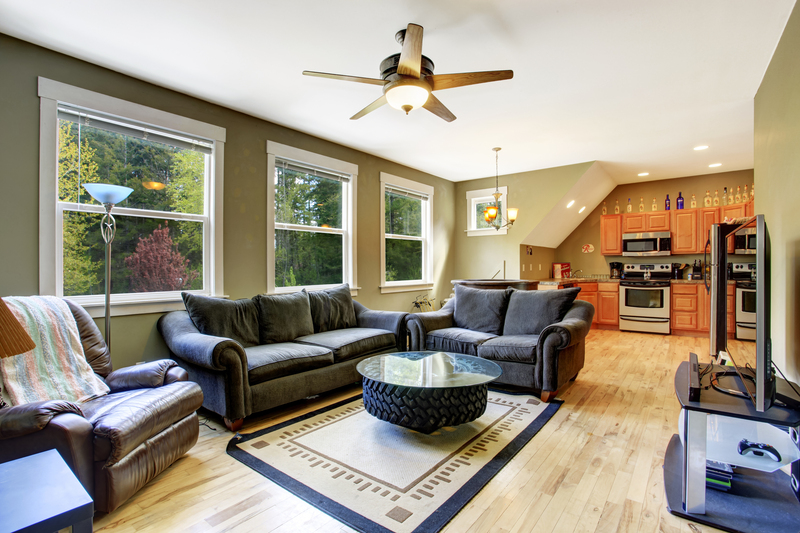Eco-Friendly Upgrades to Transform Your House
As environmental awareness continues to grow, many homeowners are seeking eco-friendly upgrades to transform their homes into more sustainable living spaces. Not only do these upgrades help reduce your carbon footprint, but they can also help you save money on energy bills and enhance the overall value of your property. Below, we delve into a myriad of innovative and sustainable improvements that can make your home greener and more environmentally friendly.
Why Conscious Home Remodeling Matters
Eco-friendly home improvements have a significant impact on the environment and your personal well-being. By adopting sustainable practices, you are contributing to the health of our planet while also reaping the benefits of better air quality, reduced utility costs, and a healthier living environment.
Benefits of Going Green
- Energy Efficiency: Reducing energy consumption lowers both environmental impacts and utility bills.
- Water Conservation: Upgrades like efficient fixtures and rainwater harvesting systems help conserve water.
- Better Air Quality: Improved ventilation and non-toxic materials contribute to healthier indoor air.
- Increased Property Value: Green homes are attractive on the real estate market.


Top Eco-Friendly Home Upgrades
1. Solar Panels Installation
Solar energy is one of the most significant eco-friendly transformations you can make. By installing solar panels, you harness renewable energy from the sun, significantly cutting down dependence on fossil fuels. This upgrade not only reduces energy bills but also increases your home's market value.
2. Energy-Efficient Windows
Replacing old windows with modern, energy-efficient windows can drastically reduce heat loss in the winter and heat gain in the summer. Look for window options that offer double or triple glazing and low-emissivity (Low-E) coatings to keep your home warm in the winter and cool in summer. This improvement minimizes the effort required by your HVAC system, cutting energy consumption significantly.
3. Smart Home Technology
- Smart Thermostats: These devices allow you to control heating and cooling remotely, optimizing energy use.
- Smart Lighting: Automated lighting systems reduce electricity consumption by turning off lights when not needed.
- Energy Monitoring Systems: Track real-time energy consumption to identify and reduce wastage.
4. Sustainable Insulation Materials
Insulation plays a critical role in maintaining your home's temperature. Opt for eco-friendly insulation materials like recycled denim, sheep's wool, or cellulose, which comprises recycled paper. These materials are not only effective insulators but are also biodegradable, reducing the environmental impact upon disposal.
5. Water-Efficient Fixtures
Installing water-efficient fixtures can help conserve this precious resource. Low-flow toilets, faucets, and showerheads reduce water usage significantly. Furthermore, integrating a greywater recycling system can allow you to reuse water from sinks and showers for irrigation, further conserving freshwater resources.
6. Rainwater Harvesting Systems
Rainwater harvesting is another excellent way to utilize natural resources efficiently. By collecting and storing rainwater, you can reduce your reliance on municipal water supplies for activities like gardening or flushing toilets. This upgrade is easy to implement and can make a significant difference in areas with frequent rainfall.
7. Sustainable Landscaping
Transform your garden into a green oasis with sustainable landscaping practices. Choose native plants and drought-resistant species to minimize water usage. Incorporate composting, use natural fertilizers, and implement smart irrigation systems to minimize environmental impact while maintaining a lush and healthy landscape.
8. Use of Non-Toxic Materials
When renovating or building, seek out non-toxic, sustainable materials. Select paints with no volatile organic compounds (VOCs), use reclaimed wood, bamboo, or cork for flooring, and opt for furnishings made with sustainable materials. These choices contribute to healthier indoor air quality and reduce long-term environmental impact.
Conclusion: Embrace Sustainable Living
Transitioning to a more eco-friendly home is an admirable and essential step toward sustainable living. These upgrades not only benefit the environment but also enhance your home's energy efficiency, air quality, and overall livability. By implementing these changes, you are not only investing in your property's future but also in the planet's well-being. Transform your house today and embrace a greener, more sustainable lifestyle.